At once a vision of the future, a thoughtful provocation, and an achievable lifestyle. In progress... Since 2012
Don't wanna be here? Send us removal request.
Text
Friend of the blog @jumpbuddhagun / Andrew Dana Hudson has written a 10 year update reflecting on his influential early Solarpunk essay: The Political Dimensions of Solarpunk. His new retrospective explores what’s held up, what’s changed, and maybe, what’s next.
Personally, I’m getting older. Saving the planet is going to require digging a lot of ditches and hauling a lot of solar panels up onto roofs and potentially strolling through a lot of tear gas. That’s all a young man’s game. If a global civilian climate corps started recruiting able-bodies tomorrow, I’m not so sure I’d make the cut. But on the other hand, my parents have, slowly but surely, over years, replaced much of the grass of their suburban lawns with raised beds, fruit trees, grape trellises, berry patches, compost bins, rainwater barrels, edible cover crops, and pollinator-friendly ornamentals. It’s a truly beautiful transformation. If they can do that in their 70s, I can surely find something useful and generative and solarpunk to do in my 40s.
In 2015 I wrote a long essay about the politics of the solarpunk movement I saw emerging on Tumblr. Today, I'm revisiting that essay to see how it held up.
121 notes
·
View notes
Text

The IGA Extra Famille Duchemin supermarket in Montreal features a 25,000 square-foot rooftop garden. Established in 2017, it produces over 30 varieties of organic vegetables, herbs, and even honey from on-site beehives. This produce is harvested and sold directly in the store, providing customers with ultra-local, fresh options.
1K notes
·
View notes
Text
Shanghai is rolling out a new kind of public bus — one that’s designed by commuters, and launched only when enough riders request it. Branded “DZ” for dingzhi, or “customized,” the system invites residents to submit proposed routes through a city-run platform. Others with similar travel needs can opt in or vote, and if demand meets the threshold — typically 15 to 20 passengers per trip — the route goes live. More than 220 DZ routes have already launched across all 16 city districts. Through an online platform opened May 8, users enter start and end points, preferred times, and trip frequency. If approved, routes can begin running in as little as three days.
150 notes
·
View notes
Text
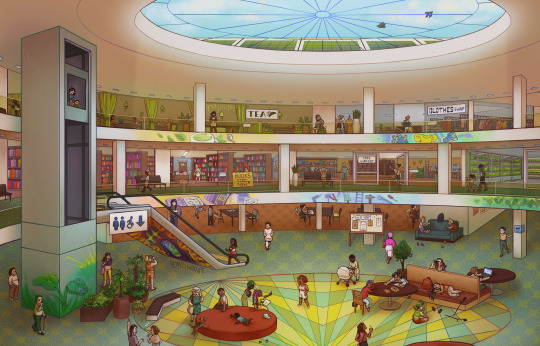
Finally finding out what this Solarpunk illustration I drew for @andrew-ism back in February is for. It's featured in this video :D I have yet to watch it but I trust it'll be good.


This is meant to be a mall that's been repurposed by and for the community, turned from a place of consumption into a great hangout spot where you can chill, have a meal, borrow some books or tools, exchange out clothes you don't wear for ones you like better and let another person take yours etc.


You can find the full-res version at the Story Seed Library.
(In hindsight, could've filled that elevator wall with more art...I also feel like I could've done more research for the whole piece, but at this point it is what it is).
667 notes
·
View notes
Text
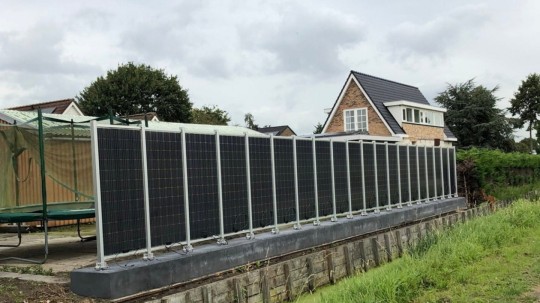
Solar panels are now so cheap, Europeans are building fences with them
The panels capture less sunlight when used as fencing than they do on roofs, but the process saves on high labour and scaffolding costs, according to analysts and posts on social media by households that have installed them.
“This is the result of solar panels getting so cheap that we’re just putting them everywhere,” said Jenny Chase, lead solar analyst at BloombergNEF. “Since installation cost — labour, scaffolding — is the vast majority of the cost of installing a rooftop PV [photovoltaic] system, it can make sense.”
“Why put up a fence when you can just put up a load of solar panels, even if they’re not aligned exactly to the sun?” says Martin Brough, head of climate research at BNP Paribas Exane. “Where the panels themselves are just incredibly cheap, the constraints become the installation costs and the sites . . . you get a bit of a DIY mentality.”
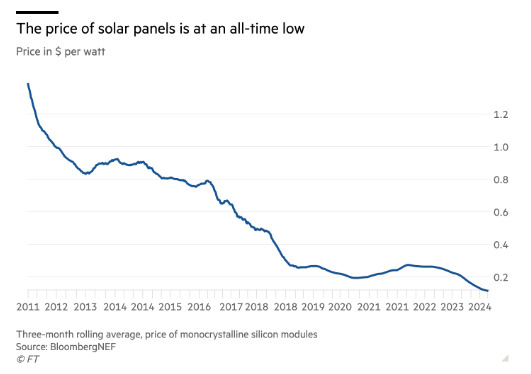
source
306 notes
·
View notes
Text

533 notes
·
View notes
Text
This is the way!
So. Storytime for guerilla gardeners and solarpunk enthusiasts. This story comes to me 3rd hand but I believe the basic shape of it is true, even if details may be off.
So there’s this guy who lives in my parents’ town. Wanted to have a pocket farm but lives on an urban lot in a small city instead because y’know jobs and stuff. He could definitely get a few raised beds in the backyard but nothing all that impressive and the front yard is on a very busy road with the expectation that it’ll look reasonably traditional (plus planting food by busy roads isn’t always a good idea).
However
After he’s lived there for a while, he realizes his neighbors are all older people who maybe have more challenges taking care of their yards than they used to. So he goes to his next door neighbor and offers a deal: I’ll mow and maintain your front yard for free if you let me knock down the fences between our backyards and plant them both with food. And you’ll get a cut of the produce.
Presumably the neighbor already knew and trusted this guy because he said yes. So he starts mowing and maintaining his and his neighbor’s front yards and planting food in their now-shared backyards. After a season or two this goes well enough that the next neighbor down the street asks if he can be in on this too.
So now there’s 3 front yards to mow and three backyards full of produce. And it keeps going from there. Dude gets a rider lawnmower and does everyone’s front yards, and meanwhile he’s maintaining an entire block’s worth of produce in the back. His yields got so high that he was able to start offering boxes of produce outside of the block’s residents too. This is how I heard of him: my parents’ next door neighbors were picking up a regular box of produce from him.
I love a couple of things about this story:
Offering to maintain people’s front yards for them allows baby boomers to feed their thirst for keeping up appearances while still getting food production into the neighborhood
As homeowners age offering services like this is legitimately good community building
BLOCK-LONG POCKET FARM
These exact circumstances might not be replicable everywhere, but I love thinking about how these principles could be applied.
17K notes
·
View notes
Text
We are not destructive by nature, but by habit. Our potential for destruction is mirrored by our potential for regeneration. If we recognize our true role as a keystone species, we can be the primary vector for restoring ecosystems and healing the earth. - Neal Spackman
youtube
84 notes
·
View notes
Text
I was talking to my dad about renewable energy and he was like “the only problem with solar farms is they take up so much space.”
And it made me think about a city and how much sun exposure all the rooftops in a city get and…why not just make the city it’s own solar farm by putting solar panels on every rooftop?
46K notes
·
View notes
Text
Preliminary planning started back in 2011, and in 2020, the reservoir action management plan, a detailed 260-page document was published by the Klamath River Renewal Corporation – the non-profit entity formed to manage the entire dam removal project. ''The document gave us our targets, and has kept us on track," says Joshua Chenoweth, senior ripariani ecologist for the tribe who was hired to manage the revegetation project. Between 2018 and 2021 seed collection crews – many of whom are tribal elders – were hired to harvest native seeds, by hand, in preparation for the dam removal. They collected 98 species and around 2,000lbs (900kg) of seeds. The seeds were then dispatched to specialised nurseries, which propagated them en masse, and sent the seedlings to storage facilities where they were kept until the time came for them to be planted.
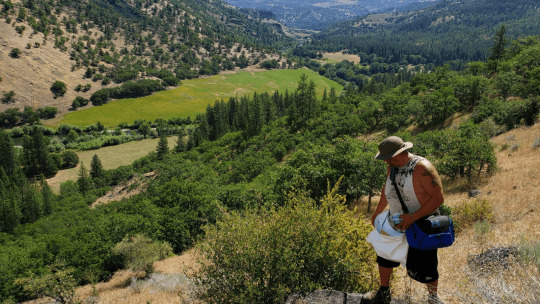
When it came to planting the seeds, Chenoweth has used a variety of methods, including seeding by helicopter alongside the old-fashioned way, by hand. Beginning straight after the first draining in late 2023, the team hand-sowed 500 acres of land, including 25,000 acorns. "It really is the most effective restoration tool. And the only reason we used a helicopter was when muddy conditions made it too dangerous for us to walk on the land." The results were "excellent", Chenoweth says. "Despite a hot and dry summer, where we've seeded is green, we're seeing flowering plants teeming with life. I counted eight different butterflies in the areas we hand-seeded. There's moths, hoverflies, bees, birds. It's been a really exciting first year." The team will continue to seed and plant the area for another two years, prioritising the tributaries important for salmon habitat. "The first year has definitely given me a lot of hope," Chenoweth, "but it'll probably get more challenging from here. Now we're completely at the mercy of Mother Nature."
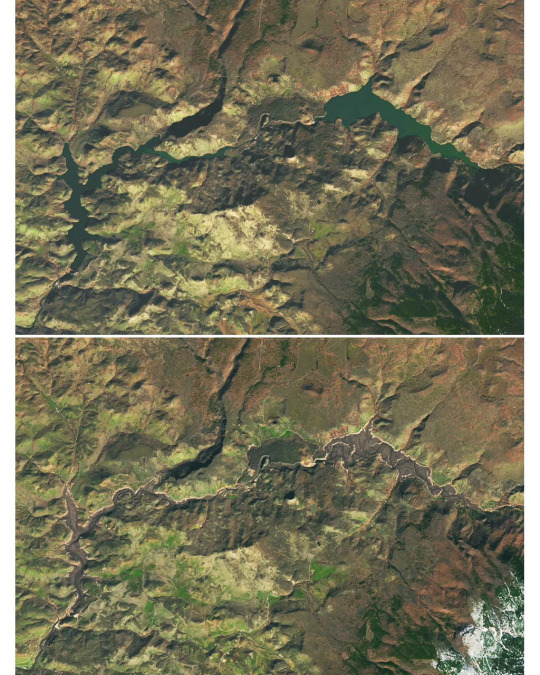
177 notes
·
View notes
Text
French agrivoltaics company Sun’Agri says that two of its facilities increased grape yields by 20% to 60% in 2024, compared to areas without solar panels. The PV modules helped regulate temperature fluctuations, reducing summer heat peaks and winter temperature declines.
98 notes
·
View notes
Text
<3
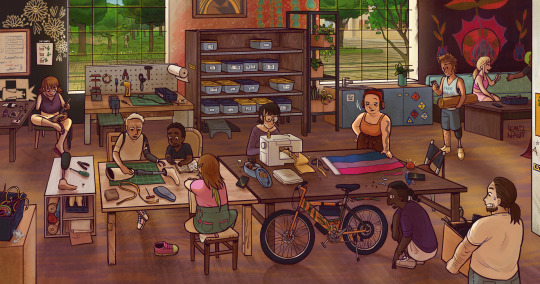
New Solarpunk illustration, yay! The full thing was made for a thing, but also each half was also drawn for the Solarpunk (writing) Prompts podcast.
This one features a maker/hackerspace. It's a thing that has existed for a while but that few people seem to know about? I myself learned about the idea from a friend relatively recently. While I've never been to one myself, plenty of references were provided and I hope I've captured the feeling well enough.
Saw the "Free shrugs" t-shirt in a 3D render over here, I believe, and fell in love with it at first sight lol. Also a locker that was plastered with stickers warning that's it's explosive, radioactive, a bio- and fire hazard and may electrocute you was too funny not to adopt. I wonder what they kept in there.
435 notes
·
View notes
Text
Well, there's a headline that seems to pretty much cover it...
70 notes
·
View notes
Text
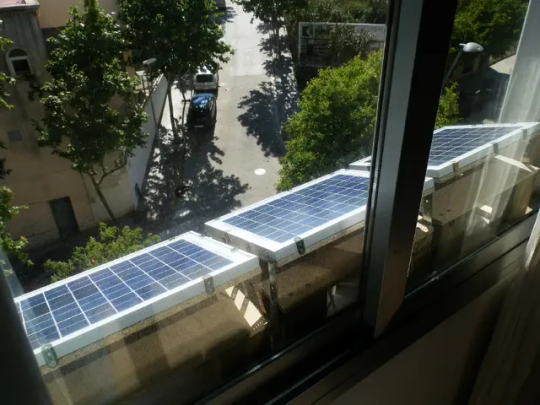
How to Build a Small Solar Power System - Low-tech Magazine
Readers have told me they like to build small-scale photovoltaic installations like those that power Low-tech Magazine’s website and office. However, they don’t know where to start and what components to buy. This guide brings all the information together: what you need, how to wire everything, what your design choices are, where to put solar panels, how to fix them in place (or not), how to split power and install measuring instruments. It deals with solar energy systems that charge batteries and simpler configurations that provide direct solar power. Conventional solar PV installations are installed on a rooftop or in a field. They convert the low voltage direct current (DC) power produced by solar panels into high voltage alternate (AC) power for use by main appliances and rely on the power grid during the night and in bad weather. None of this holds for the small-scale systems we build in this manual. They are completely independent of the power grid, run entirely on low voltage power, and are not powering a whole household or city but rather a room, a collection of devices, or a specific device. Small-scale solar is decentralized power production taken to its extremes. Most of the work in building a small-scale solar system is deciding the size of the components and the building of the supporting structure for the solar panel. Wiring is pretty straightforward unless you want a sophisticated control panel. You only need a limited set of tools: a wire stripper, some screwdrivers (including small ones), and a wood saw are the only essentials. A soldering iron, pliers, and a multimeter are handy, but you can do without them.
242 notes
·
View notes
Text
youtube
An excerpt from a talk by Richard Perkins from Ridgedale Farm - one of the worlds most influential small farms - at GEN Global Ecovillage Network Meeting 2024, Sweden
19 notes
·
View notes
Text
The reconstruction of the power grid in the areas of Appalachia where it was wrecked by Helene will ultimately offer a chance for the utility industry to rethink how the electricity system should be structured. “In areas where there could be more extreme weather events like this, it’s going to be more and more difficult to maintain far-flung distribution systems,” Norris said. “And the cost of service is going to rise, and you either have to muddle through that or think about other measures, like undergrounding lines, or trying to bring load into higher degrees of concentration so it isn’t so far-flung, or, obviously, to think more about distributed energy systems and backup power.” There are ways to build grid resilience that could be implemented on a more local level — although they’re costly.
45 notes
·
View notes
Text
Ready to assemble your very own kelp forest?
Just follow these easy steps:
✅ Assemble kelp parts in cold, nutrient-rich water ✅ Add fish and invertebrates ✅ Add sea otters! 🦦 ✅ Watch your kelp forest thrive ⚠️Warning: Without sea otters, your kelp forest may end up with an urchin overload!







#monterey bay aquarium#sea otter awareness week#how to build a kelp forest#whalecome to the ikea of the sea#some assembly required
3K notes
·
View notes